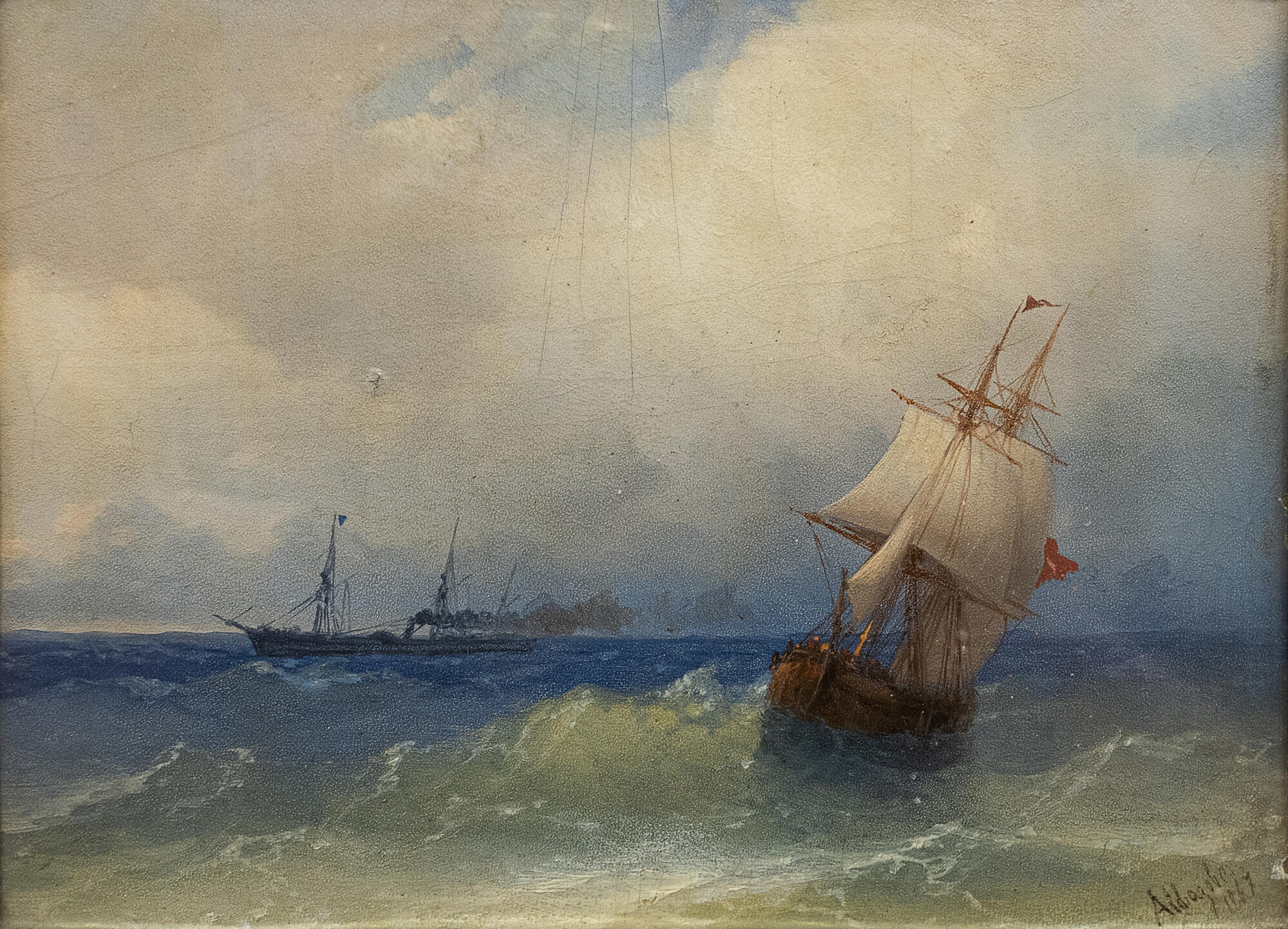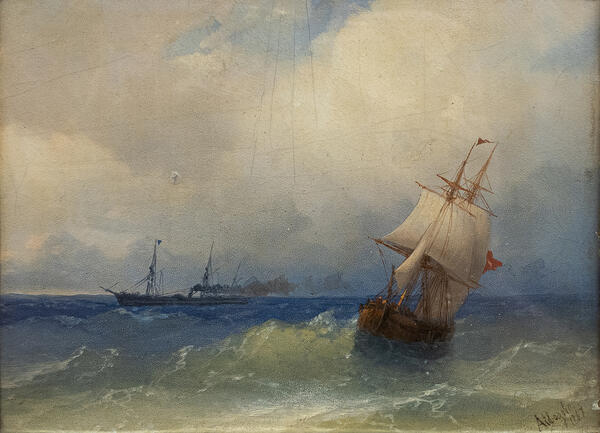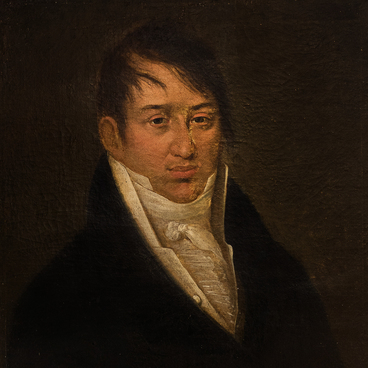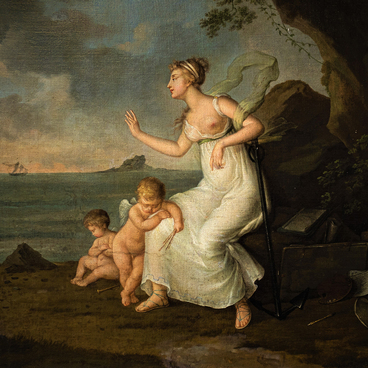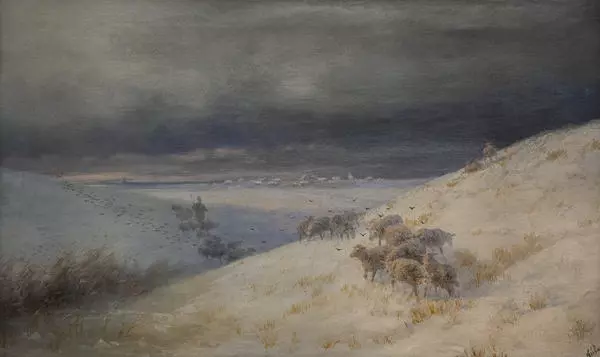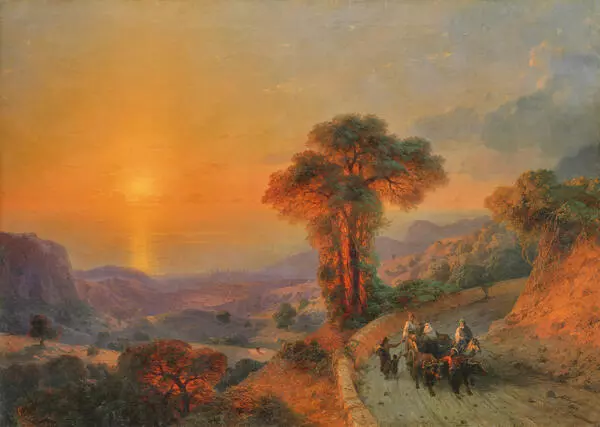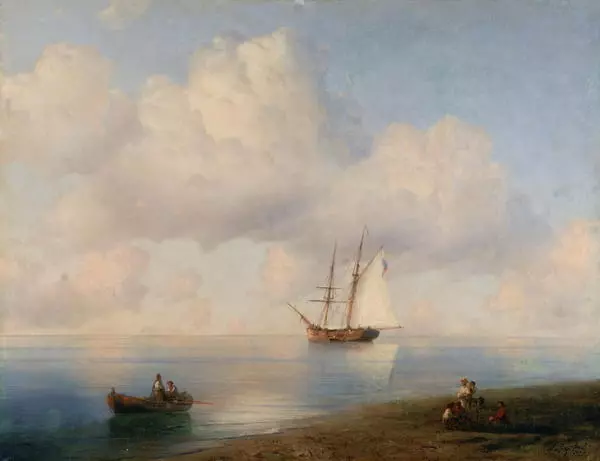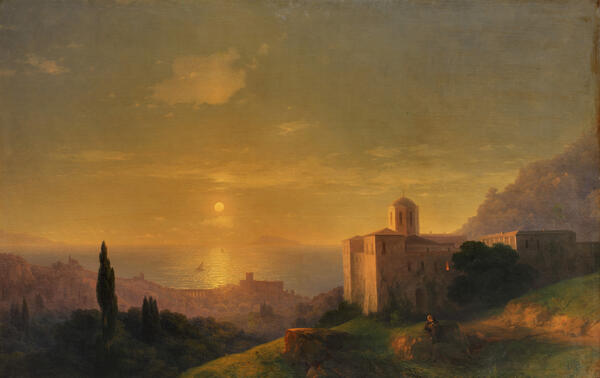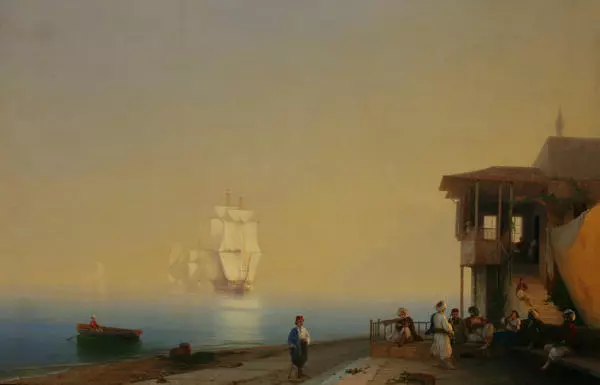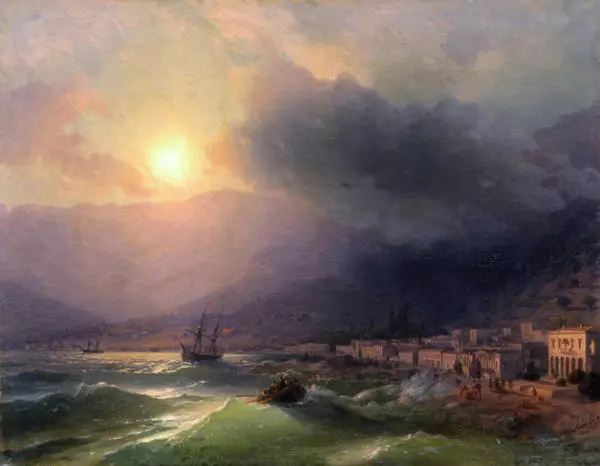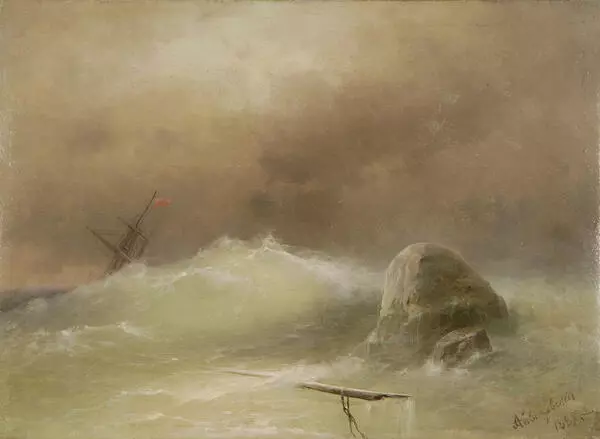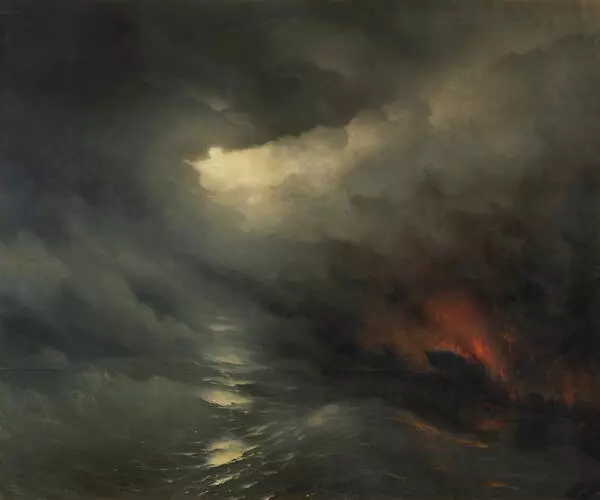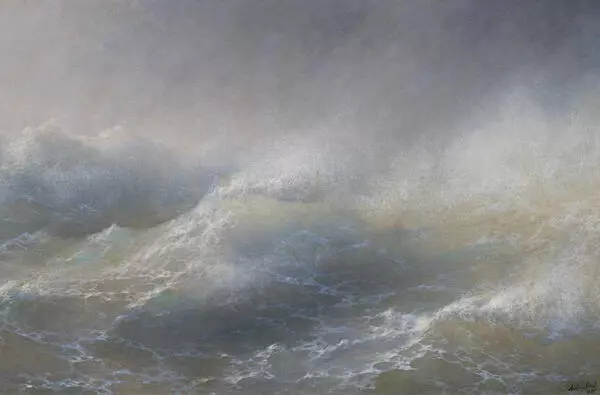The picture ‘The Sea’ by the marine painter Ivan Aivazovsky was created in 1867 and is currently housed by the museum’s gallery.
In this painting, Aivazovsky depicted the sea in a range of close green, gray and blue tones. It seems as if the water is illuminated from the inside, it looks transparent. The artist managed to achieve this effect by using the technique of glazing: he applied very thin layers of paint on top of each other. Although Aivazovsky worked with oil paints, through this technique, the colors in the picture turned out to be transparent and vivid at the same time.
Ivan Aivazovsky was born in Feodosia on July 17, his father was an Armenian merchant Gevorg Aivazyan. He took the name Konstantin and after moving to the Crimea used the Polish version of his surname — Gaivazovsky. The merchant gave his son the name of Hovhannes, which became Ivan in Russian.
The family lived in great need. Ivan made his first drawings on the sand, and at the age of eight, he depicted a sailboat on the white wall of the house with a piece of coal. From the age of ten, he worked in a coffee shop, learned to play the violin, and painted in all his free time.
Aivazovsky took his first drawing lessons from a Feodosian architect Yakov Koch, who later recommended the young artist to the Feodosian mayor Alexander Kaznacheyev. In 1830, Kaznacheyev sent Aivazovsky to the Simferopol gymnasium, where he was noticed by Natalia Naryshkina, the wife of the governor of Tavria. She allowed the boy to use her library and also wrote to the president of the Imperial Academy of Arts in St. Petersburg Alexey Olenin with a request to enroll the talented child in the academy on a full board basis.
With the personal permission of Emperor Nicholas I, Ivan Aivazovsky became a student of the Academy when he was 13. His first painting, “Etude of Air over the Sea”, participated in an exhibition in 1835 and received positive reviews. Two years later, Aivazovsky was awarded a large gold medal for three seascapes. Soon the artist graduated from the Academy and went on a creative trip: he first spent two years in the Crimea and then six years in Europe.
During the trip, Aivazovsky developed his way of working with the landscape: he painted from nature for a very short time and then restored the details from memory in his workshop. This method allowed for a great deal of improvisation. The artist worked quickly, he often created his masterpieces in one session — those were mostly seascapes and battle paintings. Besides them, he painted Crimean cities and steppe landscapes, as well as paintings on biblical and historical themes. Portraits, however, were a much rarer occurrence in his artwork.
When Aivazovsky returned to Russia, he received the title of academician. In 1844, he became a painter of the Main Naval Staff, and in 1847 — a professor at the St. Petersburg Academy of Arts. After becoming rich, Aivazovsky opened an art school and a gallery, installed a water supply system and initiated the railway construction in his native Feodosia.
The artist died on April 19, 1900, and the picture “Exploding Ship” was left unfinished. During his life, Aivazovsky created over 6,000 paintings.
In this painting, Aivazovsky depicted the sea in a range of close green, gray and blue tones. It seems as if the water is illuminated from the inside, it looks transparent. The artist managed to achieve this effect by using the technique of glazing: he applied very thin layers of paint on top of each other. Although Aivazovsky worked with oil paints, through this technique, the colors in the picture turned out to be transparent and vivid at the same time.
Ivan Aivazovsky was born in Feodosia on July 17, his father was an Armenian merchant Gevorg Aivazyan. He took the name Konstantin and after moving to the Crimea used the Polish version of his surname — Gaivazovsky. The merchant gave his son the name of Hovhannes, which became Ivan in Russian.
The family lived in great need. Ivan made his first drawings on the sand, and at the age of eight, he depicted a sailboat on the white wall of the house with a piece of coal. From the age of ten, he worked in a coffee shop, learned to play the violin, and painted in all his free time.
Aivazovsky took his first drawing lessons from a Feodosian architect Yakov Koch, who later recommended the young artist to the Feodosian mayor Alexander Kaznacheyev. In 1830, Kaznacheyev sent Aivazovsky to the Simferopol gymnasium, where he was noticed by Natalia Naryshkina, the wife of the governor of Tavria. She allowed the boy to use her library and also wrote to the president of the Imperial Academy of Arts in St. Petersburg Alexey Olenin with a request to enroll the talented child in the academy on a full board basis.
With the personal permission of Emperor Nicholas I, Ivan Aivazovsky became a student of the Academy when he was 13. His first painting, “Etude of Air over the Sea”, participated in an exhibition in 1835 and received positive reviews. Two years later, Aivazovsky was awarded a large gold medal for three seascapes. Soon the artist graduated from the Academy and went on a creative trip: he first spent two years in the Crimea and then six years in Europe.
During the trip, Aivazovsky developed his way of working with the landscape: he painted from nature for a very short time and then restored the details from memory in his workshop. This method allowed for a great deal of improvisation. The artist worked quickly, he often created his masterpieces in one session — those were mostly seascapes and battle paintings. Besides them, he painted Crimean cities and steppe landscapes, as well as paintings on biblical and historical themes. Portraits, however, were a much rarer occurrence in his artwork.
When Aivazovsky returned to Russia, he received the title of academician. In 1844, he became a painter of the Main Naval Staff, and in 1847 — a professor at the St. Petersburg Academy of Arts. After becoming rich, Aivazovsky opened an art school and a gallery, installed a water supply system and initiated the railway construction in his native Feodosia.
The artist died on April 19, 1900, and the picture “Exploding Ship” was left unfinished. During his life, Aivazovsky created over 6,000 paintings.
